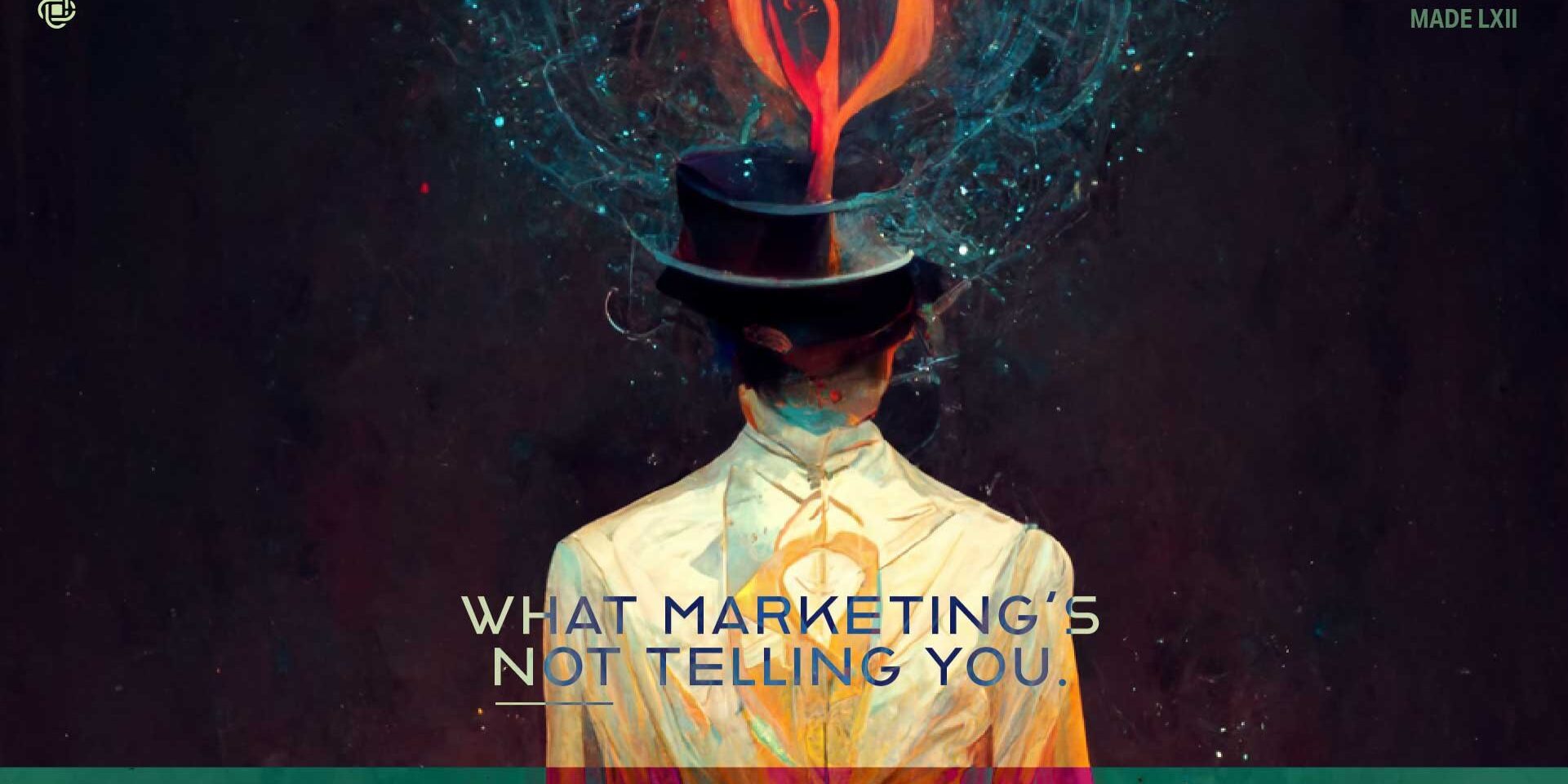Last week we started a new series called What Marketing’s Not Telling You, where we opened with some seemingly bad news that marketing departments are hesitant to share:
We actually think that’s not bad news – so give the piece a read to learn why inattention might be in the best interest of a brand. At least for a while.
But on to this week, where once again we’re going to tackle a topic that Marketing departments all know but often aren’t saying out loud…
The problem is not the marketing. The problem is the problem.
Loving A Problem
Unless you are one of a few stone-cold psychopaths in the world, then the idea of consistently stopping and meeting issues head-on with absolute resolve probably doesn’t sound appealing. And why would it? We’re taught and even encouraged to move around or past problems:
-
Get over it.
-
Move on.
-
Buck up.
-
Get past it.
-
Forge ahead.
And when it comes to business leaders – we often find they’ve been taught these same maxims. It’s not that any of these leaders are maliciously ignoring issues. It’s that few if any of their advisors or brand agencies are illuminating the benefits of really stopping to see and understand the issues. Most everyone is busy offering suggestions and solutions.
The downfall of this tactic, and why the first step to solving problems really is loving the problem itself, is that a solution without understanding doesn’t actually fix what’s wrong. If your water heater developed a small leak, you wouldn’t address it by laying towels under it and returning every few hours to replace the soaked towels with new dry ones. You might for a day, but a week? A month? Six months? Even though it’s a solution, and it functionally works, we all know what’s going to happen…
You’ll soon be in the towel-buying business, and the leak will get worse. It’s time to call the plumber and get a new water heater.
It’s hard to be interested in anything you don’t care for, appreciate, or even love. This is why we encourage leaders that – the first step to solving any problem, is stopping and falling in love with it. Develop a strong curiosity about where the challenges and pitfalls are in your organization, how they impact it, who’s involved, why, and so forth.
It can be tempting to jump to solutions, but beware: A misunderstood problem never stays away for long. And when it comes back, it’s bound to be bigger.
The Problem Is The Problem
“Eventually you have to watch the problem. And find the easier way to solve it.”
This piece of wise advice comes direct from our founder Nick Richtsmeier’s hard-working grandfather. He couldn’t be more right.
Last week we spent some time gently tossing marketing departments under the bus for their tendency to keep things vague and aloof as a way to make measuring their efforts a challenge. As marketers ourselves, we’ve spent plenty of time under the bus as well and we understand why marketers do it.
But this week, we’re rising to the defense of marketers, especially as it relates to problems within the brand. That’s because many times marketers are asked to fix a problem, that isn’t actually the problem. Here’s an example:
Almost a year ago, we ran a piece about Burger King’s failed advertising strategy and flagging revenue in 2021, despite routinely beating Mcdonald’s in taste tests. How could a brand, with an agreed-upon superior product, be losing in the marketplace? The answer, we found, was locked in the brand’s marketing strategy – which was almost always aimed at knocking down their competitors, rather than centering their customers or even their products. BK’s CEO said as much in an interview,
“…we have a great brand and assets to build from, but we need to double down on putting the guest experience at the center of all of our efforts.”
The issue of not centering customers is, at its core, not just a marketing problem. Moreover, it’s not what BK’s marketing was asked to solve. They were asked to solve a different problem, of making competitors look less attractive – something the customers weren’t wrestling with, and which isn’t the real obstacle to begin with.
The real battle at hand is that a lack of customer-centrism must be corrected by the C-suite, and then trickled down from the food scientists all the way to the cashier working the counter, and the cook wrapping the burgers.
That’s a massive challenge to solve. It’s easier to just slap some new paint on the logo or advertise in another part of the world. It’s easier to move on. Get over it. Move past. How’s that working out for the Burger King?
In May of this year, BK’s parent company reported having surpassed the revenue predictions their analysts had set for Q1 of 2022. The primary reason? They marketed more strongly overseas and generated more overseas sales.
But their stateside revenue, the same stateside where the problem lived two years ago, remained flatlined.
BK has yet to address the lack of customer-centrism – especially domestically. They moved on to solving the issue of revenue generation – and solved it by advertising to people overseas. In effect, they asked marketing to solve a problem that wasn’t the real problem and were thus given a solution that’s not really a solution.
At home, where Burger King was born and raised, the water heater is still leaking.
Eventually, even if you’re a global force, like BK, you have to learn to truly watch the problem. Or you won’t solve it.
Marketing Helps CEOs Solve Problems
As marketers, and also the ones championing CEOs and business leaders, we want to leave those in the C-suite with a tangible piece of advice; a way to tackle the real problems in their organization (not merely trying to right the brand’s perception or the perception of the issue). And we think the Marketing department is the perfect place to start. Why?
Because almost any element that affects the brand affects the customer too. And no one knows the customer better than the marketing team (at least that’s true of the good marketing teams). Most of the brand problems we help CEOs solve, are real issues the customer will have to deal with too:
-
Overpromising the benefits\features of a product
-
Poor or lacking customer service
-
Disjointed user journey
-
Lackluster user research
-
Bland or inflated messaging
How then to engage the Marketing Department? Start by giving them their proper due. Acknowledge their understanding of the customer and their needs. Then, present the problem and ask a simple question,
“Is this really the problem, or is there a deeper one here?”
Humbling, we know. And maybe slightly terrifying. But what you may discover, by engaging the marketing team this way, is not only the real problem you’re facing – but also several more, along with solutions you may have never dreamed of.
Wherever marketing departments are given full reign to love the customer, understand them, and lend that understanding to helping the brand solve problems – you’ll find a brand’s reputation at all-time highs and impassioned customer loyalty.
Need to know where the brand’s problems are? Ask the marketing department. They can usually point you right to them.
Ready to really fix them but are all out of solutions? Then it’s time we met.



